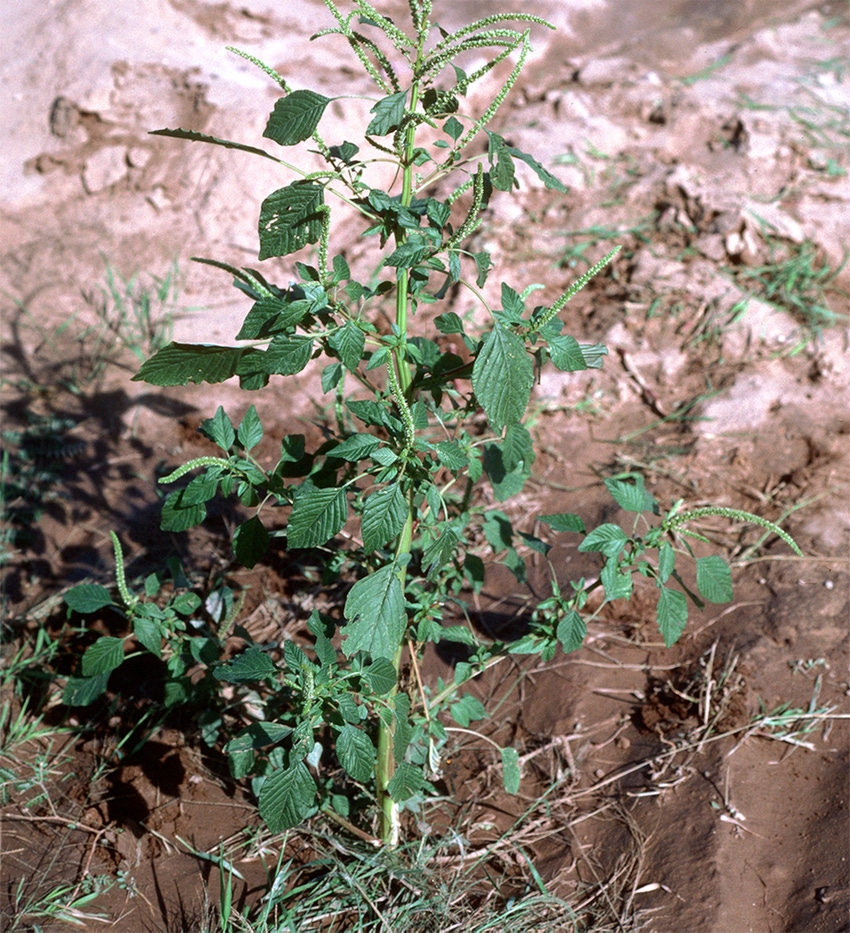
Uncontrolled weeds in young walnut orchards can rob nutrients and water intended for optimum tree growth.
Winning the war against weeds in the first few years after planting can give growers an advantage in tree productivity and a good head start in weed control during the life of the orchard, says Kurt Hembree, University of California (UC) Cooperative Extension (UCCE) farm advisor at Fresno County.
Middles are typically mowed or disked for weed control. It’s the rows that create the largest weed control challenge.
Several issues can make weed control in walnut orchards more difficult for growers, says Hembree. More invasive weeds developing resistance to certain herbicide modes of action plus higher berms in new plantings can make equal spray coverage across the row challenging.
Growers should plan ahead to take advantage of a ‘fall window’ to decide on a weed control strategy. At harvest, or in the case of newly planted trees in October, growers can see areas where weed pressure is high and should note which weeds are present.
The first couple years are the ideal time to stop weeds, Hembree says. Taking advantage of the pre-emergent application window from late October to early December is also critical. Delays in application after the first rainstorms can make the weeds more difficult to control, he notes.
Pre-emergent applications should have good soil contact. Hembree advises using two modes action in the tank mix. Plus, blowing leaves and plant debris from berms prior to an application can improve soil contact and reduce herbicide waste.
The UC Integrated Pest Management (IPM) program notes that established perennial weeds are most vulnerable to control during the fall season because the weeds begin dormancy and store carbohydrates in the roots or reproductive structures. Post-emergent herbicides applied at this stage can be translocated to the roots or rhizomes and can effectively kill weeds.
Consistent monitoring can help with choosing and timing weed control treatments. Late fall and late spring are the optimum times to survey for weed pressure in orchards. The fall survey can identify emerging winter species. In late spring, note those that escaped control earlier herbicide applications and check for regrowth in perennials.
The UC IPM program recommends keeping records and maps of weed pressure along with the timing, rates, and dates of herbicide applications. Records kept over the long term can identify weed population patterns and control program effectiveness.
Weed control, especially in perennial crops, should be a priority before the trees are planted since there are more weed control tools available before planting trees than after. These tools include non-selective herbicides and cultivation.
At least two cycles of cultivation followed by irrigation can reduce new weed seedlings. Soil solarization can also be effective on planned tree rows, yet ground preparation is necessary to make a smooth seedbed to improve soil-to-plastic contact.
Walnut growers in California’s central San Joaquin Valley mainly fight fleabane, burning nettle, plus at the end of winter sprangletop. This mid-summer grass has invaded many new walnut orchards.
Hembree says unless it is controlled early little can be done to knock it back.
“If your pre-emergent has fizzled out a second treatment is critical,” he said.
If this occurs, Hembree suggests two tank mix applications of glyphosate and Select Max. If sprangletop flowers, Hembree says it can be difficult to contain.
In walnut orchards located near dairies in Kern and Tulare counties the weed Palmer amaranth has become a problem in young orchards.
Mariano Galla, UCCE agronomy and weed science farm advisor in the Sacramento Valley, says the worst weed pressure orchard crops in this region are horseweed and fleabane. Field bindweed, nutsedge, annual ryegrass, and three-spiked goosegrass are also difficult to control in young orchards.
About the Author(s)
You May Also Like




